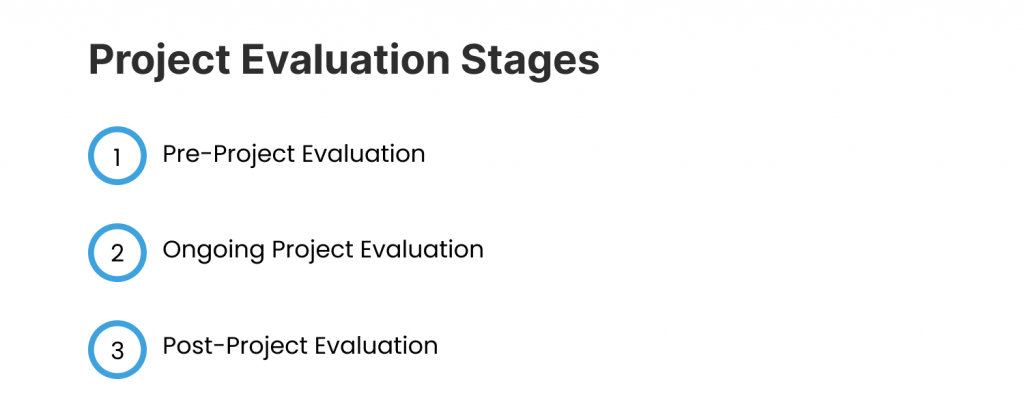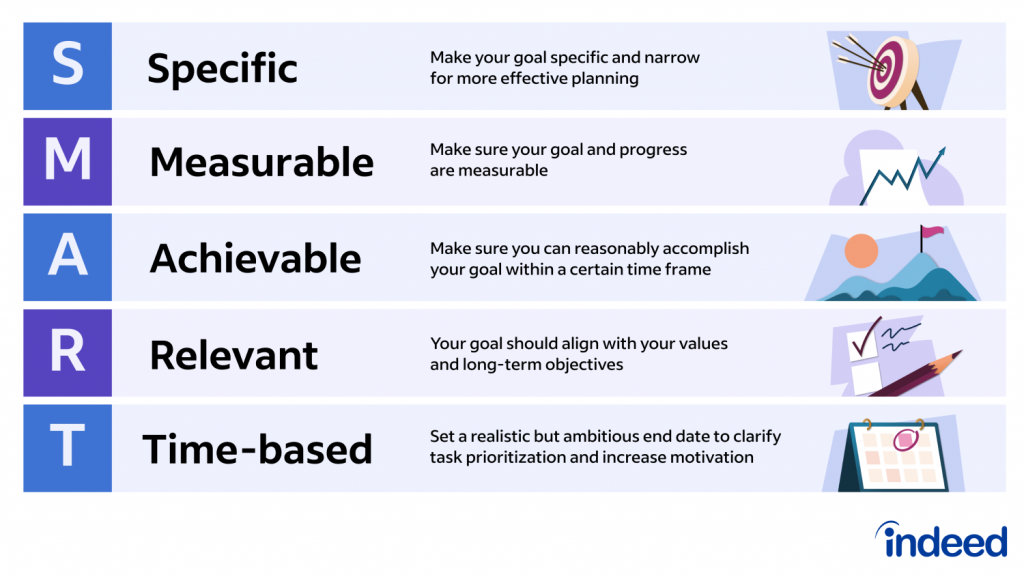

As a project manager, understanding the ins and outs of project evaluations is crucial. It’s not just about gauging the success or failure of a project but about gaining insights that can drive better decision-making in future endeavors.
But what exactly is project evaluation? What methods does it follow? And what steps and elements are involved in an effective evaluation?
Well, that is what you will discover in this blog. Whether you’re an experienced manager or just starting out with project management (check the video below for a head start), it’s going to be informative.

This method, also known as “feasibility assessment,” takes place before a project officially begins. It’s a crucial step that helps determine if the project is worthwhile and has a high chance of success.
Here’s a breakdown of what pre-project evaluation entails –
Usually, this stage of evaluation constitutes the planning part of your project. Here, you brainstorm your project’s main requirements in collaboration with stakeholders.
As the project progresses, ongoing evaluation plays a vital role in monitoring its performance and making adjustments as needed.
Here’s what this method involves –
Apart from these, evaluating a project also involves closely monitoring the implementation of changes suggested in the previous stage, ensuring they are reflected in project charters and briefs.
Also, keep an eye on key project metrics such as project budget, team productivity, and performance analysis, among others. It’s a good practice to keep projects on track.
Once your team is done with all the project stages, a final evaluation is conducted to assess its overall success and glean valuable lessons.
This can be accomplished through a team meeting. By directly engaging with team members, you can gather insights and formulate strategies to address shortcomings to ensure enhanced performance in future projects.
Here’s a quick summary of what post-project evaluation focuses on –
Project evaluation isn’t a one-time event. Here are the five key stages that guide you through a comprehensive evaluation process –
Before anything else, it’s vital to set clear, specific objectives and expected outcomes for the evaluation. You can ask some common questions like:
Clearly defined goals (or SMART goals) ensure your evaluation focuses on the right aspects and gathers relevant data. To figure out what “SMART goals” mean, you may check this blog –

Once the goals are set, the next step is planning how to achieve them.
This involves selecting the appropriate evaluation method (such as surveys, focus groups, or performance data analysis) and determining the resources you will need.
Planning also includes setting a timeline for the evaluation process, deciding who will be involved, and defining the roles and responsibilities of each participant. It is important to seek all stakeholders’ opinions and insights to comprehensively understand the project experience.
To facilitate this process, maintain a checklist of interview and survey questions. Additionally, conduct group discussions to identify common issues and challenges encountered throughout the project’s duration.
Data collection is crucial but can be one of the most time-consuming steps in the evaluation process.
Collect quantitative data (such as completion times, budget metrics, and number of deliverables) and qualitative data (such as stakeholder satisfaction and team member feedback).
The methods for data collection can vary – ranging from surveys and interviews to observation and document reviews. The key is to gather sufficient and relevant data that provides insights into the project’s performance.
I can give you examples of some sources where you can collect data –
Once you have all the information, it’s time to make sense of it. This involves –
Data analysis can be done using various statistical tools and software, depending on the complexity of the data and the specifics of the project. It helps determine the efficiency of the project, identifying whether it was completed successfully or if it experienced issues related to time and cost overruns.
The final step is to share your findings in a clear and concise report.
Communicate your evaluation results to stakeholders, outlining successes, challenges, and, most importantly, actionable recommendations for future projects. This helps translate your learning into practical improvements for the next endeavor.
Remember, it should be clear, concise, and structured in a way that stakeholders can easily understand and use. The report should include an executive summary, detailed analysis, conclusions, and recommended actions for future projects.
You can use a project management system like ProProfs Project, which offers detailed reports on various aspects.
Hear what María Franco Avalos (Geographical Information Systems Specialist, UNDP) has to say after using the platform –
“We immediately saw an increase in the number of progress reports on activities. Our main partners had up-to-date information and motivated them to learn more about specific project issues. Accountability has also improved for our implementation partners: Government, civil society, and international cooperation.”
Project evaluation isn’t just a tick-the-box exercise. It’s a deep dive into the project’s effectiveness, efficiency, and impact. Here’s a breakdown of the seven key elements that guide a comprehensive evaluation –
Did the project address a real need or opportunity? Did it align with the organization’s strategic goals? A relevant project solves a genuine problem and contributes to the organization’s overall objectives.
Next comes the question – Did the project achieve its intended outcomes? How well did it meet the established objectives?
Think of launching a marketing campaign to increase sales by 10%. Effectiveness measures how close you came to achieving that goal.
Were resources (time, money, personnel) used optimally? Could the project have been delivered more efficiently?
You wouldn’t like to spend twice the budget for a project with the same results. Efficiency evaluates how well resources were utilized to achieve outcomes.
So, what was the impact of the project? Did it create a positive and lasting impact on stakeholders, the organization, or the target audience? Impact assesses the long-term effects and value generated by the project.
Can the project’s benefits be sustained in the long run? Are there mechanisms in place for continued success? This can be best understood with an example –
Imagine a new software implementation that requires constant updates and maintenance. This indicates sustainability is an issue with the project. A sustainable project is more likely to endure over time the project’s benefits.
Knowing the outcomes is a part of the post project evaluation processes. It is important to ensure that the project has met the goals decided at the onset.
So, how do you do it? Figure out what the tangible results of the project were. Check if it meets quantitative and qualitative benchmarks.
What valuable insights can be gleaned from the project, both in terms of successes and failures? How can these insights be applied to future projects?
This is a crucial part of project evaluation as it can identify anomalies like communication gaps in a project and develop strategies for better collaboration next time.
Lessons learned capture the knowledge gained from the project’s experience to improve future endeavors.
Project evaluation is a pivotal part of the project management lifecycle. It is essential to conduct this at every stage of the project.
A thorough evaluation also ensures you better understand the project’s requirements and the chances of risk. But, to ensure this, you need to use a software solution that helps you in every step of the evaluation process.
ProProfs Project is a project management evaluation software where you can centralize all your project data – documents, tasks, discussions, and reports – in one platform. With built-in analytics, you can track key performance metrics, identify trends, and generate insightful reports to effectively communicate your evaluation findings to stakeholders.
Test the software today using its freemium plan. All you need to do is sign up and get started.
Project evaluation is crucial because it helps you understand what worked well, what didn’t, and why. This knowledge empowers you to –
There are three main types of project evaluation:
For a more detailed idea about each type, you can read the respective sections in the blog.
There isn’t a single “best” method for project evaluation. The ideal approach depends on your project’s stage and goals. However, combining all three methods (pre-project, ongoing, and post-project evaluation) provides the most comprehensive understanding of your project’s success.
Project evaluation analyzes a project’s success after completion, while project selection chooses the best project from competing options. They work together: evaluation helps refine future selection criteria, and selection picks projects that are likely to succeed based on past information.
FREE. All Features. FOREVER!
Try our Forever FREE account with all premium features!